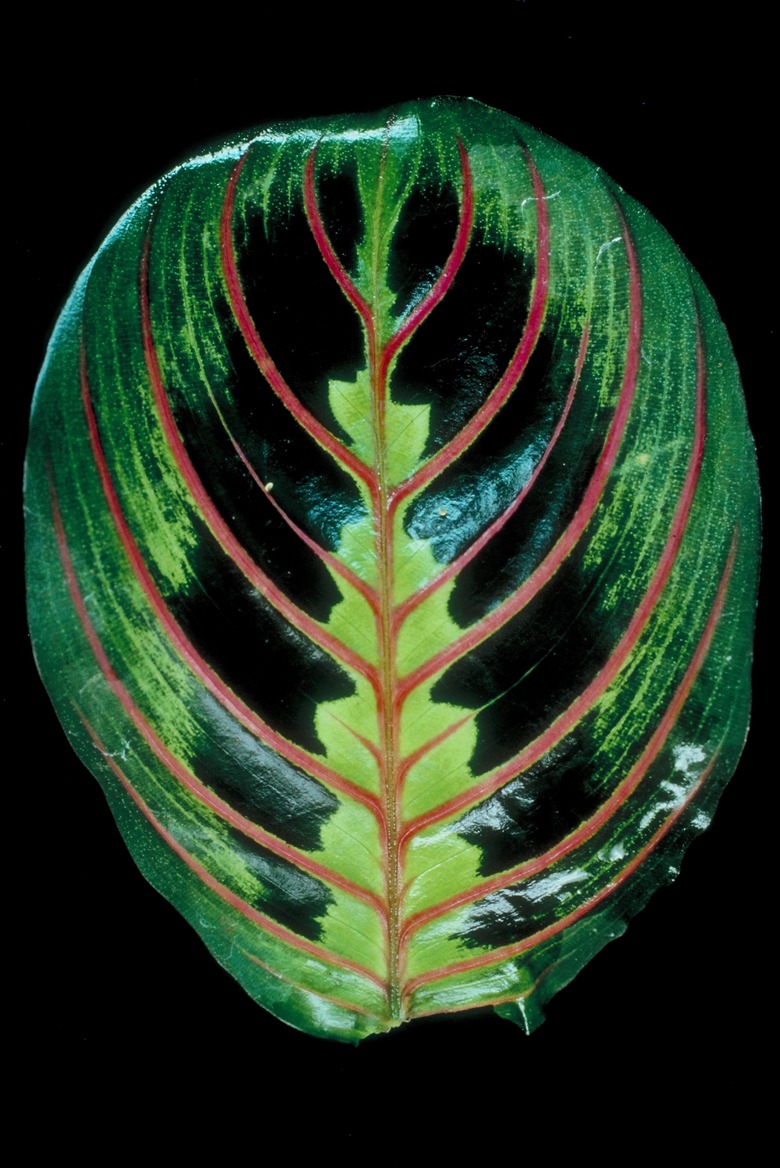My Prayer Plant Is Wilting
Maranta, or prayer plant (Maranta leuconeura), is a tropical plant usually grown indoors for its large, variegated, oblong or oval foliage. Wilting leaves indicate an underlying problem with the plant. Caused by a variety of reasons, including improper irrigation practices, pests and growing problems, immediate diagnosis and specific treatment help stressed plants regain their vigor and health.
Irrigation
Irrigation
Improper irrigation practices cause the foliage of the prayer plant to wilt and dry. The tropical plants thrive in slightly moist soils during the winter and evenly moist during the summer. While under-watering causes the plant to dehydrate and wilt, especially during the summer, over-watering causes root rot. Rotted leaves fail to absorb and transport moisture to the foliage, causing them to gradually wilt and drop. Irrigate the soil when the top 1 inch feels dry to the touch. Provide a steady stream of water until excess drains out through the holes.
Humidity
Humidity
Prayer plants exposed to dry, indoor air exhibit shriveling or wilting of foliage. Because the plants thrive in high humidity, position a humidifier nearby or place each plant on a tray of pebbles and pour water into the tray until just below the pot's drainage holes. Maintain the level of water in the pebble tray at all times. Avoid placing the prayer plant near a heat source of an area with cold drafts.
Excessive Light
Excessive Light
Excessive sunlight causes the leaves of the prayer plant to wilt and dry up. Ideally, the plant requires five to six hours of indirect sunlight and consistent temperatures between 65 and 85 degrees Fahrenheit to thrive. Initial symptoms of excessive sunlight include wilting or curling leaf edges and tips. Unless corrected, the entire leaf surface wilts, appears dry and turns brown. Hang a light curtain near the window or source of direct sunlight during the summer months if the prayer plant is placed nearby. Alternatively, move the plant a few steps back so it receives indirect sunlight or dappled shade.
Pests
Pests
Pest infestations cause the foliage of prayer plants to wilt, dry and eventually fall off the plant. Mealybugs, spider mites and aphids are attracted to the tropical plants. The damaging pests suck plant juices with their piercing mouth parts, causing infected leaves to wilt. Aphids and mealybugs cause further damage by secreting honeydew, a sticky substance that creates the ideal environment for sooty mold. Rub infected parts of the prayer plant with cotton dipped in alcohol, or spray infestations with neem oil.
References
- "The Complete Houseplant Survival Manual"; Barbara Pleasant; 2005
- University of Florida IFAS Extension; Maranta Production Guide; R.W. Henley, et al.
- East Texas Gardening; Prayer Plant; Susan Carlile
- University of Illinois Extension; Diagnosing Houseplant Problems; Sandra Mason; January 2009
- Purdue University Cooperative Extension; Houseplant Problems; Paul C. Pecknold; August 1996
